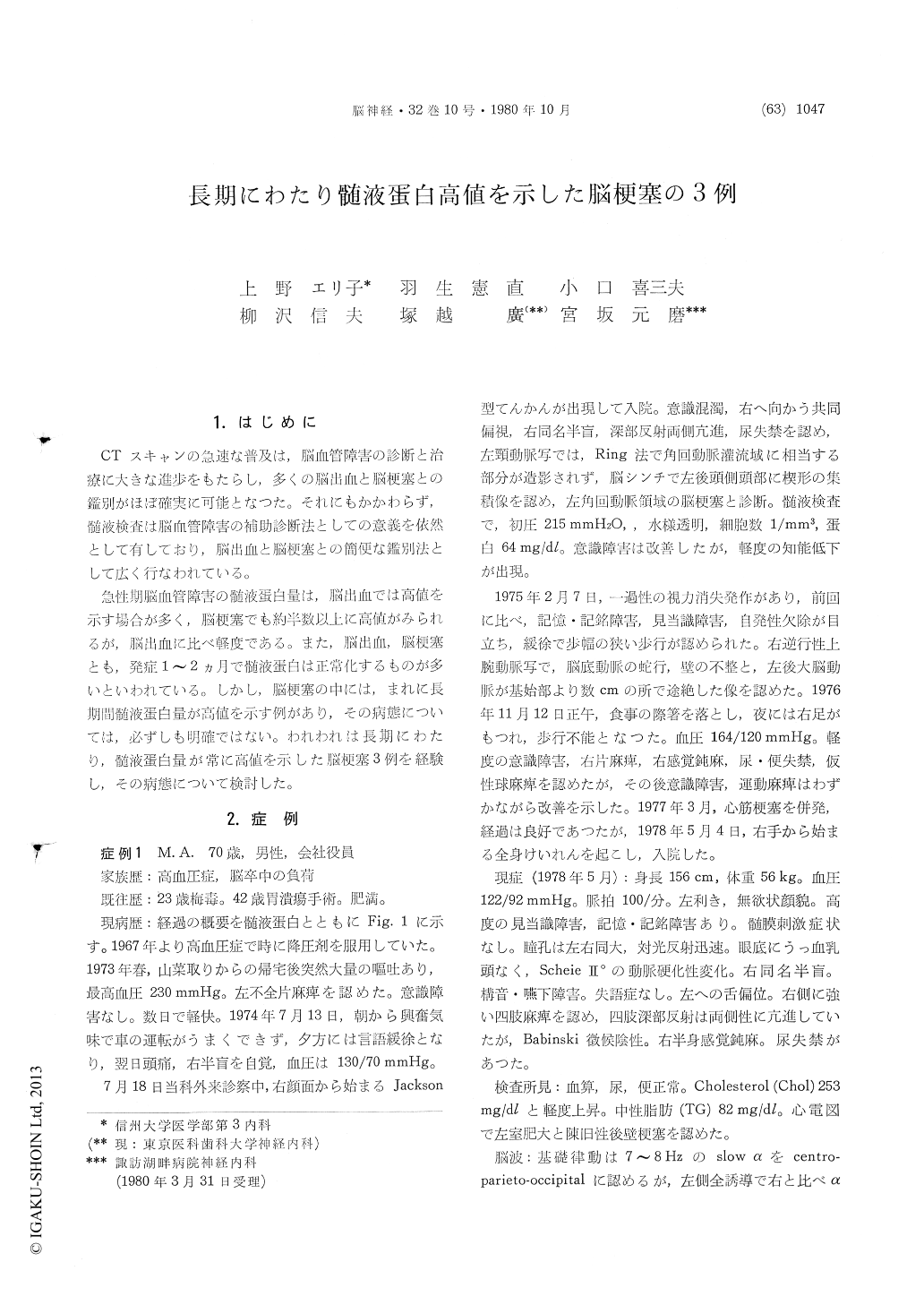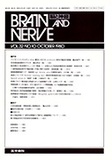Japanese
English
- 有料閲覧
- Abstract 文献概要
- 1ページ目 Look Inside
I.はじめに
CTスキャンの急速な普及は,脳血管障害の診断と治療に大きな進歩をもたらし,多くの脳出血と脳梗塞との鑑別がほぼ確実に可能となつた。それにもかかわらず,髄液検査は脳血管障害の補助診断法としての意義を依然として有しており,脳出血と脳梗塞との簡便な鑑別法として広く行なわれている。
急性期脳血管障害の髄液蛋白量は,脳出血では高値を示す場合が多く,脳梗塞でも約半数以上に高値がみられるが,脳出血に比べ軽度である。また,脳出血,脳梗塞とも,発症1〜2ヵ月で髄液蛋白は正常化するものが多いといわれている。しかし,脳梗塞の中には,まれに長期間髄液蛋白量が高値を示す例があり,その病態については,必ずしも明確ではない。われわれは長期にわたり,髄液蛋白量が常に高値を示した脳梗塞3例を経験し,その病態について検討した。
Examination of cerebrospinal fluid (CSF) is im-portant as a diagnostic procedure of cerebrovascular disease, although CT scan is comming into general use. Generally. CSF protein content increase markedly in many cases of cerebral hemorrhage and moderately in about half cases of cerebral infarction. Usually, protein content in CSF returns to normal within a few months after the attack of cerebral hemorrhage or infarction. Very rarely, protein content of CSF remains highly increased for longer period in cerebral infarctions, but its cause is unknown.
We have observed three cases of cerebral infarctions which maintained high content of CSF protein for 3 to 8 years, and studied their clinical features and CT scans in search for causes of persistent high content of CSF protein.
Case 1. A 70-year-old man with longstanding hypertension became hemiplegic on left side on spring 1973, when his systolic blood pressure was 230mmHg. He was improving clinically, but on July 1974 he had an attack of Jacksonian seizure and lost consciousness. Slight dementia was noticed on recovery after several weeks. He had two more attacks of apoplexy within two and a half years.
Case 2. A 71-year-old man who had uncontrolled high blood pressure for several years was confused and developed right hemiplegia on November 1975. Despite of rapid recovery, he lost consciousness again on July 1977 with left hemiplegia which was followed by another attack of left hemiplegia after one month.
Case 3. A 61-year-old man who had hypertension and diabetes mellitus for several years developedleft hemiplegia on November 1970, when his blood pressure was 220/110mmHg. On April 1972 he noticed dysarthria and right hemiparesis, which became worse by another stroke after three years.
The contents of CSF protein of each case were as follows; Case 1: 63-106mg/dl, case 2: 59-210mg/dl, case 3: 67-270mg/dl. All these cases had more than 3 times of cerebrovascular accidents. They had pseudobulbar palsy and tetraplegia, and in general findings they had obesity, hypertension, arteriosclerosis and hyperlipidemia. Two cases had dementia and urinary incontinence, and one case had diabetes mellitus. Other diseases which might rise the CSF protein were denied on each case. CT scan showed large and/or multiple low density areas which involved the cerebral cortex. The recurrence of cerebrovascular accidents and wide-spread lesions may relate to the persistent high content of CSF protein in cerebral infarctions.

Copyright © 1980, Igaku-Shoin Ltd. All rights reserved.


